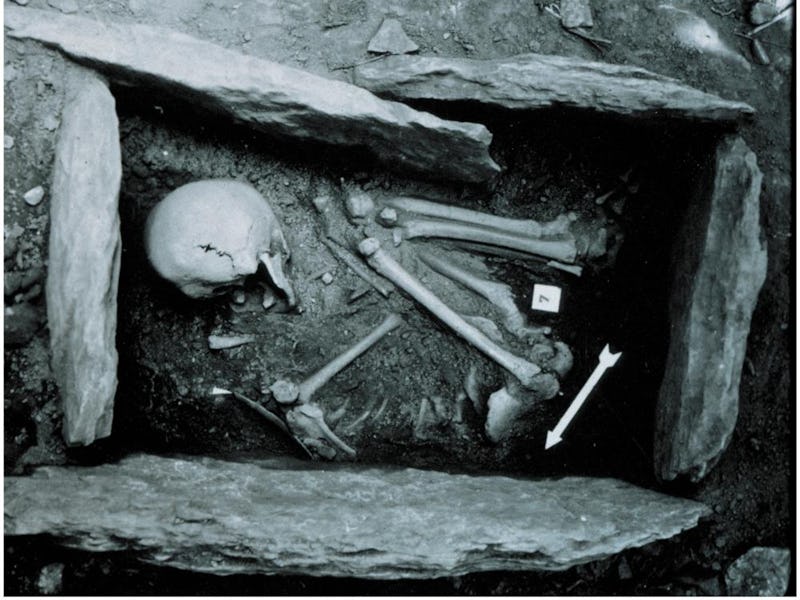6,000 Years Ago, Scientists Find A Neolithic Society Treated Immigrants As Equals
Isotopic analysis reveals what may have been an egalitarian farming society in Switzerland.

Of the many infuriating findings about humankind from throughout history, evidence of inequality between groups of people persists. However, a recent discovery about ancient humans in Valais, Switzerland suggests that for one group of people about 6,000 years ago, men and women — including outsiders — had equal access to resources, suggesting an egalitarian community. A study published in the Journal of Archaeological Science: Reports by a team at the University of Geneva (UNIGE) describes the findings.
Agriculture came to what’s now Switzerland between 5500 and 2200 BCE, during the Neolithic times. During this time, communities moved from gaining their sustenance from hunting to raising animals and crops. The Barmaz site at Collombey-Muraz in the Chablais region of Valais contains the bones of 70 individuals from one of the oldest known farming societies in western Switzerland known to have preserved human remains.
The team performed isotopic analysis on bones from 49 individuals, roughly the same number of men and women. Isotopic analysis measures the ratios of isotopes, or atoms with varying numbers of neutrons, in bone collagen. Some isotopes, which can come from plant and animal food sources, tend to stick around in collagen, making them a reliable measure of diet and therefore social mobility through access to resources like food. The researchers identified the ratios of isotopes of carbon-13, nitrogen-15 and sulphur-34 in collagen from each individual.
They found that across individuals, regardless of sex or whether they were locals, isotope ratios had a high degree of homogeneity. This indicates that all these people could access the same resources. This isn’t always the case. There are Neolithic societies with dietary differences between sexes from other regions, like in the south of France.
‘‘What’s more interesting is that we didn’t measure any differences between men and women,’’ first author Déborah Rosselet-Christ, a doctoral student at the Laboratory of Archaeology of Africa and Anthropology in the UNIGE Faculty of Science, said in a press release. ‘‘Nor even between locals and non-locals. These results therefore suggest equal access to food resources between the different members of the group, whatever their origin or sex.”
Strontium isotope ratios in some bones revealed 14 percent of individuals were outsiders because of their marked differences. Still, these nomads had equal access to food.